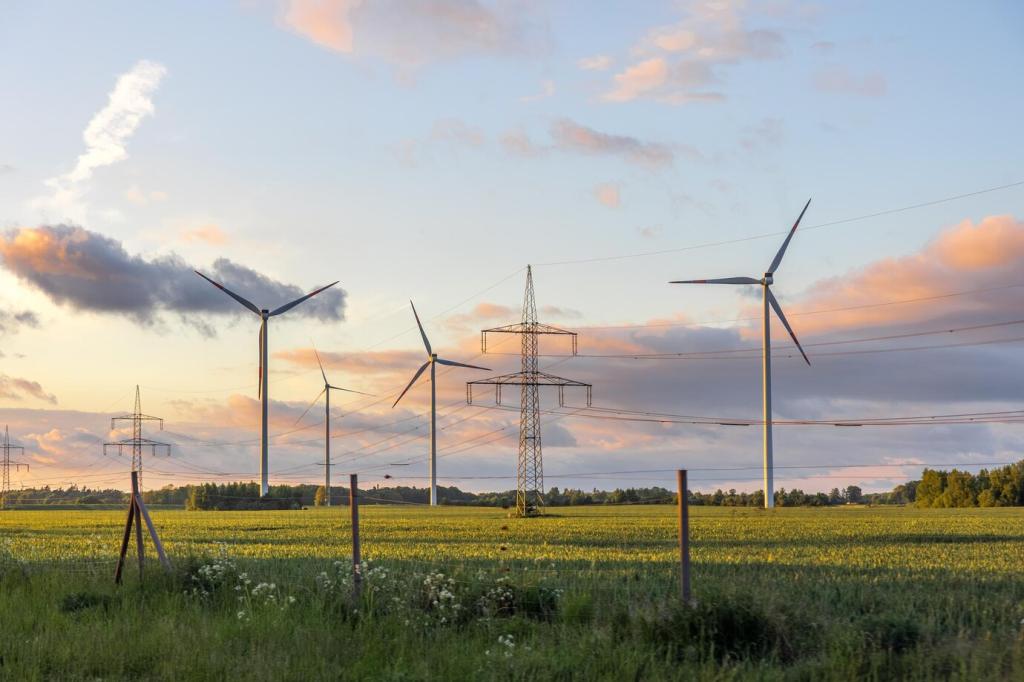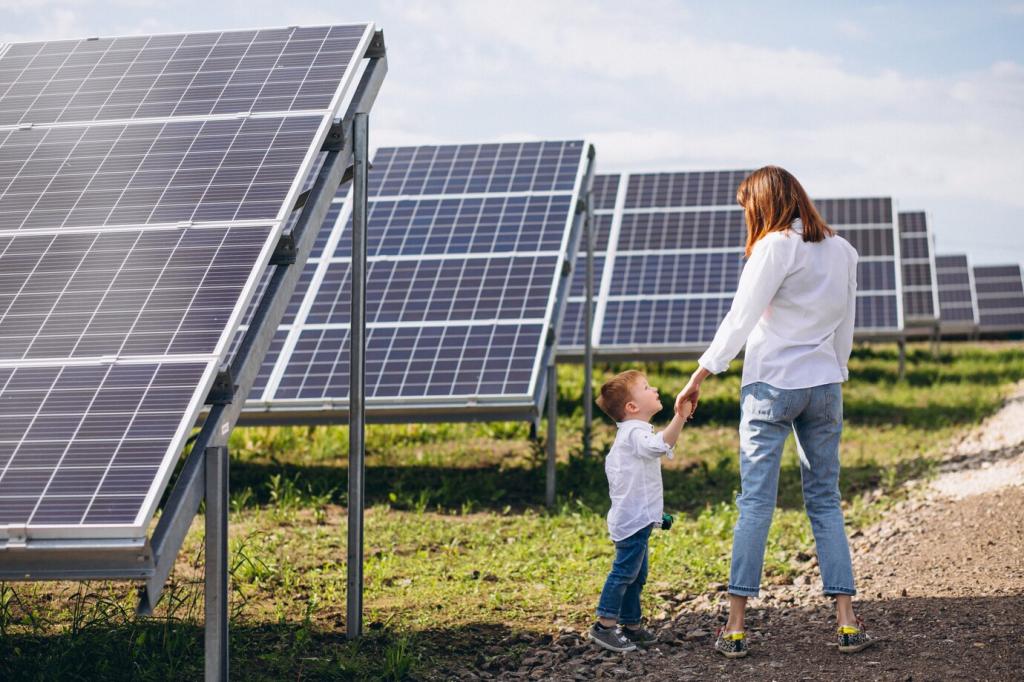
Chosen Theme: Energy-efficient Heating Solutions for Eco-Homes
Welcome to our eco-home journal, where comfort meets conscience. Today’s selected theme is Energy-efficient Heating Solutions for Eco-Homes. Explore practical strategies—from heat pumps to radiant floors and smart controls—that dramatically cut emissions without sacrificing warmth. Join the conversation, share your questions, and subscribe for monthly deep dives and homeowner checklists.

Think Low-Temperature, Think Efficiency
Eco-homes thrive on low supply temperatures because smaller temperature differences mean lower losses. Radiant floors at roughly 27–35°C (80–95°F) and oversized emitters allow heat pumps to run efficiently and steadily, keeping comfort silky-smooth while reducing cycling, noise, and energy waste across seasons.
Coefficient of Performance, Explained Simply
A heat pump’s COP tells you how many units of heat you get per unit of electricity used. A COP of 3 means 1 kilowatt-hour in, 3 out. Better design, good controls, and mild outdoor temperatures keep COP high, cutting operating costs and significantly slashing your home’s carbon footprint.
Comfort Is More Than a Thermostat Number
True comfort blends air temperature with mean radiant temperature and gentle air movement. Radiant systems warm surfaces, so your body feels cozy at lower air temperatures. That subtle shift multiplies efficiency, reduces drafts, and creates a calm, healthy indoor environment you’ll appreciate every chilly morning.
Heat Pumps That Shine in Green Homes
Air-Source Heat Pumps: Quiet, Capable Workhorses
Inverter-driven air-source heat pumps deliver consistent heat, even in cold climates, by modulating output to match demand. Proper sizing, good defrost strategies, and low-temperature distribution keep efficiency high. Ask neighbors or local installers about noise ratings, and tell us your experiences to guide fellow readers choosing systems.
Ground-Source Heat Pumps: Steady as Bedrock
Ground-source systems tap stable earth temperatures to maintain excellent year-round efficiency. While drilling or trenching adds complexity, the payoff is whisper-quiet operation, strong performance during cold snaps, and long service life. If you’ve lived with geothermal, share your lessons learned to help others plan smarter retrofits.
Air-to-Water Systems for Hydronic Comfort
Air-to-water heat pumps pair beautifully with radiant floors, low-temperature radiators, and fan coils. They enable zoning, domestic hot water production, and weather-compensated controls from one efficient platform. Thinking about upgrading from a conventional boiler? Tell us your layout and climate, and we’ll publish tailored design pointers.
Radiant and Hydronic Distribution Done Right
Warm Floors That Feel Like Sunshine
Radiant floors turn slabs and lightweight assemblies into gentle thermal batteries. Lower water temperatures, longer run times, and ideal comfort at your feet mean less stratification and fewer drafts. Share your favorite floor finish and build-up details; we’ll feature reader projects that balance response time and efficiency.
Low-Temperature Radiators and Fan Coils
Modern panel radiators and low-temp fan coils deliver quick, responsive heat without scorching supply temperatures. Oversizing emitters and using thermostatic valves allows finer control and quieter rooms. If your home has varied room sizes, zoning with these emitters can trim runtime while enhancing comfort and energy savings.
Zoning That Works Without Overcomplication
Smart zoning matches heat only to occupied spaces, but simplicity wins. Use room sensors, thermostatic valves, and clear schedules instead of complex spaghetti piping. Readers often report fewer cold spots and lower bills after rationalizing zones—tell us how many zones you run and what changed your comfort most.
Smart Controls, Weather Compensation, and Storage

Weather Compensation That Anticipates the Day
Outdoor reset curves lower water temperature as the weather warms, letting heat pumps operate at higher efficiencies. Pair with learning thermostats and occupancy sensing to trim unnecessary runtime. Many homeowners see meaningful savings and steadier comfort—share your best reset curve tips so others can tune faster.

Thermal Batteries: Buffers, Slabs, and Tanks
Buffer tanks, radiant slabs, and phase-change materials store off-peak heat and release it gently when needed. This strategy reduces cycling, supports time-of-use electricity pricing, and steadies room temperatures. Considering a buffer tank? Tell us your system size and goals; we’ll suggest right-sized options in a future post.

Connected Monitoring for Peace of Mind
Remote sensors and dashboards track COP, flow rates, and indoor conditions. Alerts flag clogged filters, low glycol levels, or faulty valves before comfort suffers. If you love data, share screenshots of your heating dashboard; we’ll showcase community benchmarks that help newcomers set realistic performance targets.
Envelope First: Reduce the Load Before You Heat
Air sealing trims uncontrolled leaks, while continuous insulation keeps heat where you want it. Even modest improvements can downsize your heat pump, reduce cycling, and quiet the home. Tell us your blower-door numbers and insulation upgrades; we’ll compile reader results to show the power of envelope-first thinking.
Envelope First: Reduce the Load Before You Heat
High-performance glazing, insulated frames, and smart shading deliver winter gains without summer glare. South-facing glass, thermal curtains, and exterior shades create passive comfort that complements efficient heating. Share your window specs and solar strategies; we’ll map how orientation influences your heating bills across the seasons.


Real Stories, Costs, and Your Next Steps
Maya’s 1970s house had cold corners and a wheezing boiler. She sealed leaks, added attic insulation, and installed an air-to-water heat pump with radiant floors downstairs. Bills dropped dramatically, rooms felt calmer, and her indoor air improved. Share your retrofit story to inspire the next eco-home on the block.
Real Stories, Costs, and Your Next Steps
Right-sizing equipment and improving the envelope often beat chasing headline efficiencies. Stack local incentives, utility rebates, and low-interest green loans to accelerate payback. Curious what others saved? Comment with your region and system type, and we’ll crowdsource a realistic range of costs and timelines next month.
